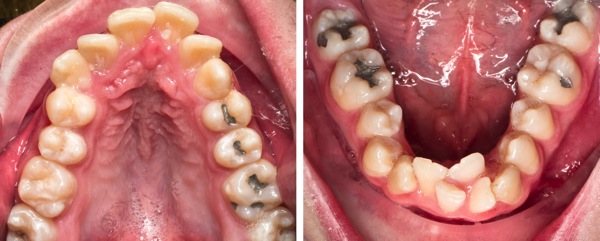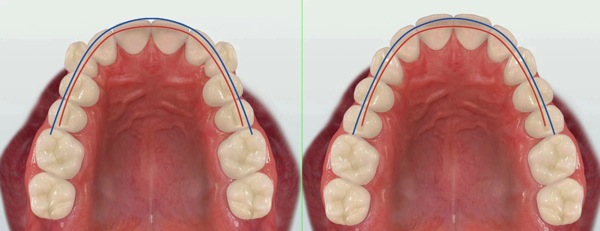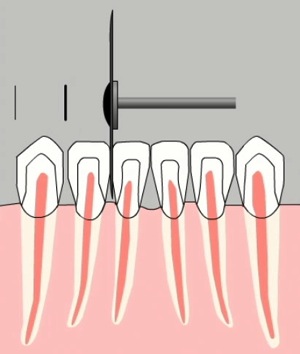-
Humphries Orthodontics Video Intro
Reply
We have a new Humphries Orthodontics video intro created by Dr. Sage Humphries. This will proceed any video roll on future video projects. Let us know what you think!
-
3 Ways to Resolve Orthodontic Crowding
The most common orthodontic problem is crowding. By definition, crowding occurs when the width of the teeth, in either the upper or lower jaw, is greater than the amount of space available. Crowding takes many different shapes and forms and no two instances will be the same. Crowding results in maligned or crooked teeth and may result in rotated teeth, overlapping teeth, and/or in and out discrepancies between adjacent teeth. Crowding may also preclude teeth from erupting into the arch form and may result in impacted teeth (teeth stuck in the bone).
In the ideal scenario, the upper and lower teeth are evenly aligned so that the all of the edges of the front teeth are aligned along a continuous arc. As the arc straightens out in the posterior portions of the jaws, the central grooves that run through the middle of the posterior teeth should line up.
There are three primary reasons that it is preferred to resolve orthodontic crowding.
- When there is overlapping teeth (rotations in conjunction with in/out discrepancies) it can be more difficult to effectively access the areas between the teeth for cleaning. This has a detrimental impact on oral hygiene and can lead to a number of problems some of which include, a localized periodontal disease and bone loss between the teeth and tooth decay.
- It goes without saying that it is more esthetic to have the upper and lower teeth evenly aligned. Even those with very little knowledge about dentistry can appreciate the esthetic compromise of poorly aligned teeth secondary to crowding.
- In order to construct the ideal bite, or relationship between the upper and lower teeth, it is essential that the teeth are properly aligned. Maligned teeth can result in all types of problems with the bite (to be covered in future blog posts).
Ultimately, the three benefits to properly aligned teeth void of any rotations and/or in and out discrepancies are that they improve access for cleansability and proper oral hygiene, it is enhances dental esthetics and the attractiveness of the smile and it allows for the upper and lower teeth to fit together well.
That being said what modalities are available in order to resolve orthodontic crowding.
There are three ways to resolve crowding.- Expansion (image below)
- Extraction
- Interproximal Reduction
One way to resolve crowding is through the expansion of the upper and lower dental arches. If the arc that the teeth are aligned on expands in width and length there is more space to align the teeth. This allows for the resolution of the discrepancy in width of the teeth relative to the amount of space available. After arch expansion the perimeter of the arc that the teeth are aligned upon is greater or longer thereby offering more space to resolve the crowding.
A second way to resolve orthodontic crowding is to create space through the extraction of permanent teeth. There are many different extraction patterns that can be implemented and there are many factors that must be considered in choosing the appropriate extraction pattern. Ultimately by taking teeth out, you gain the space equivalent to the amount of space that tooth took up within the arch. That is to say, if two teeth that were straight were extracted and they totaled 14mm in width (a premolar is usually between 7 and 7.5mm in width) then you would gain 14mm.
A third and final way to resolve crowding is through interproximal reduction or polishing between teeth. From a conceptual stand point interproximal reduction involves removing a small amount of tooth structure between teeth. Although the amount of space gained is relatively small, when interproximal reduction is done in multiple sites within the arch several millimeters of space can be gained. For example, lets say interproximal reduction was done between the lower front 6 teeth (5 sites). If 0.2mm of interproximal reduction is done at each site (0.1mm of enamel reduction on each tooth at the site of polishing) you would gain a total of 1.0mm. Usually interproximal reduction is limited to no more than 0.5mm between teeth. It is also worth noting that there are other reasons in which an orthodontist may perform interproximal reduction.
Now that we have reviewed the modalities available to resolve crowding we have to discuss what factors must be considered in order to choose the most appropriate treatment option. Stay tuned for another post regarding what factors are involved in choosing the appropriate modality to resolve crowding.




